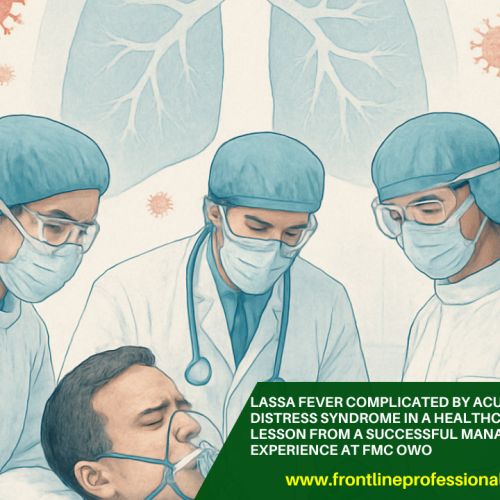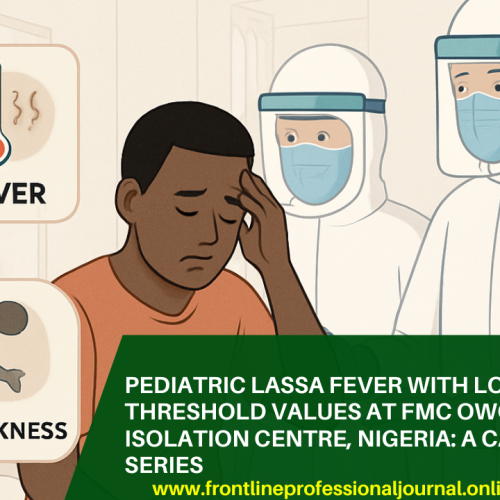Authors: David, J. S., Ebitea, N. P., Maude, B. D. L., Okoedoh, O., Osuji, A. U., Agaga, F., Peletiri, I. C., Ayanbimpe, G., and Ikeh, I. E.
CITATION: David, J. S., Ebitea, N. P., Maude, B. D. L., Okoedoh, O., Osuji, A. U., Agaga, F., Peletiri, I. C., Ayanbimpe, G., and Ikeh, I. E. (2025). Prevalence of multidrug-resistant tuberculosis among previously treated tuberculosis patients in FCT, Nigeria. Frontline Professionals Journal 2(7), 40-49
ABSTRACT
Background: Multidrug-resistant tuberculosis (MDR-TB) remains a significant public health concern worldwide, particularly in countries like Nigeria, where the burden of TB is high. Among those previously treated for tuberculosis, the risk of developing drug-resistant strains increases, making it critical to monitor resistance patterns in this population.
Objective: This study aimed to determine the prevalence of MDR-TB among patients in the Federal Capital Territory (FCT), Abuja, who had undergone treatment for pulmonary tuberculosis (PTB) in the past.
Methods: A cross-sectional survey was conducted involving 203 individuals with a prior history of PTB treatment. Participants were recruited from selected TB treatment centers in the FCT. Structured questionnaires were used to obtain demographic and clinical data. Sputum samples were analyzed using Ziehl-Neelsen staining and cultured for drug susceptibility testing against first-line anti-TB drugs. Data were analyzed using SPSS version 25, with statistical significance set at p < 0.05.
Results: Of the 203 participants, resistance to isoniazid and rifampicin was observed in 24.0% and 18.1% of cases, respectively. The prevalence of confirmed MDR-TB was 15.0%, while the rate of MDR or rifampicin-resistant TB (MDR/RR-TB) stood at 18.6%. Poly-drug resistance was identified in 1.0% of cases. Although females showed slightly higher resistance rates than males, no statistically significant associations were found between resistance patterns and age or sex.
Conclusion: This study highlights a concerning prevalence of MDR-TB among previously treated PTB patients in the FCT. The findings underscore the urgent need to strengthen drug resistance surveillance, improve patient follow-up, and support treatment adherence through more targeted TB control programs.







